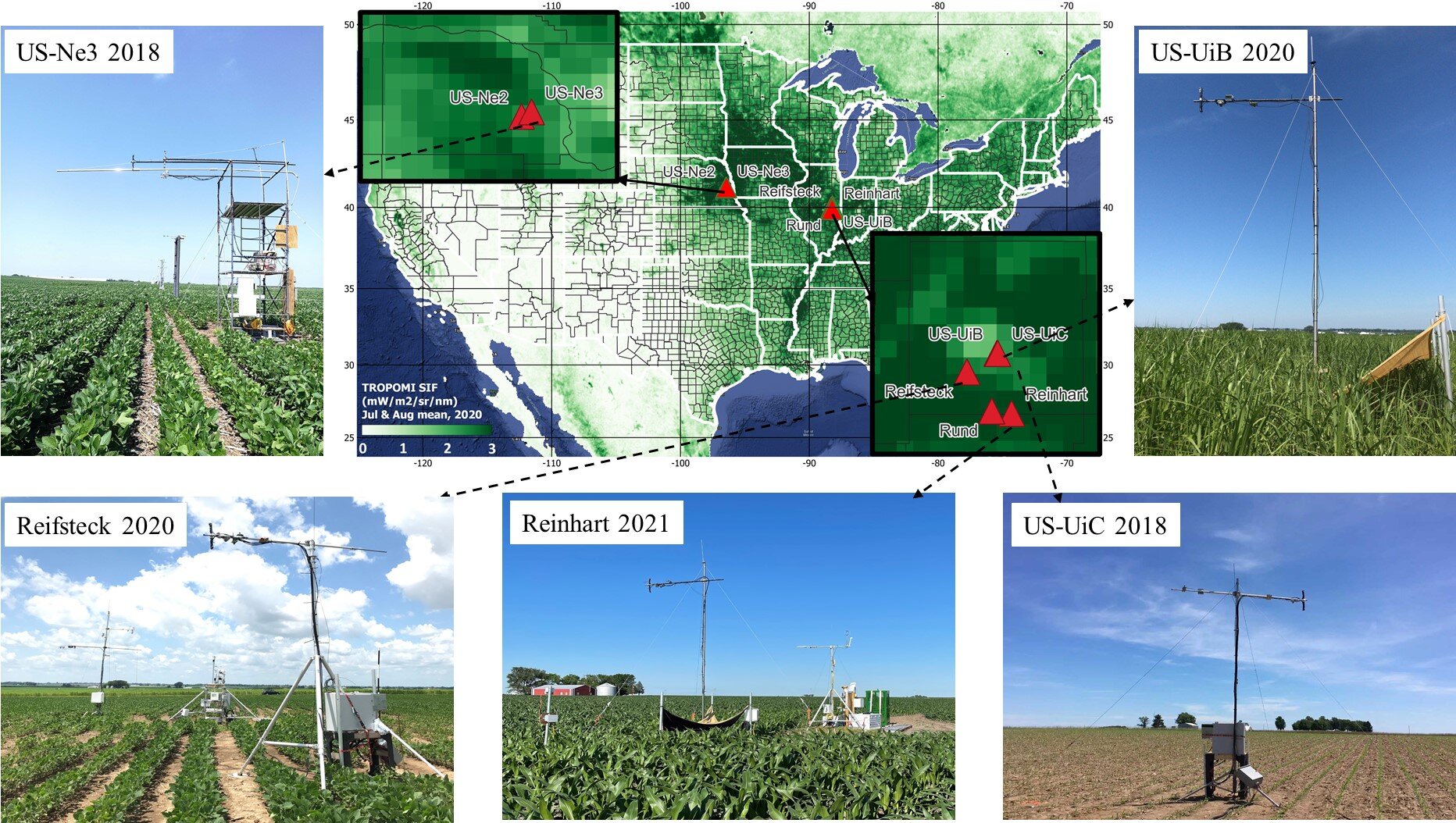Recently, there has been a growing focus in the scientific community on sustainable agriculture, with the goal of increasing crop yield while reducing environmental impact. One key area of research is the study of plant photosynthesis processes and how they can be effectively monitored on a large scale.
A team led by Genghong Wu, a Ph.D. student under the guidance of Kaiyu Guan, director of the Agroecosystem Sustainability Center (ASC), has conducted a study using ground-based instruments to measure far-red sun-induced chlorophyll fluorescence (SIF) and various vegetation indices (VIs) that indicate plant health and activity. They collected data on SIF and VIs from different crops such as corn, soybean, and miscanthus over six years (2016-2021) in the U.S. Corn Belt (Illinois and Nebraska).
The findings of this research have been published in the journal Scientific Data.
“Eddy covariance towers are currently the standard for measuring canopy photosynthesis,” Wu explained. “However, they are costly and limited in their distribution globally. Satellite SIF data offers continuous spatial coverage, but understanding the relationship between ground-based and satellite SIF is crucial for effective monitoring of photosynthesis.”
This extensive dataset presented in the study can provide valuable insights into the connection between far-red SIF and canopy-level photosynthesis. This understanding is essential for accurately interpreting SIF data, whether obtained from ground-based observations or satellite sources.
2024-04-26 02:00:02
Original post available on phys.org
